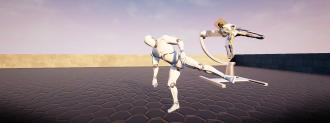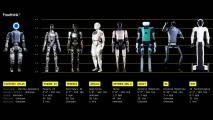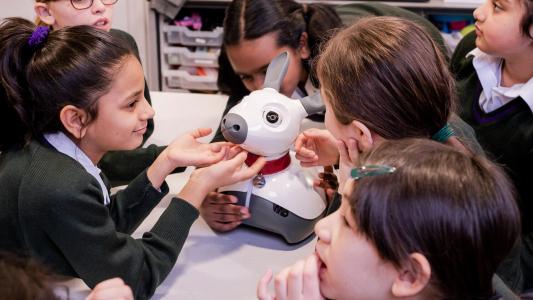Today’s virtual reality headsets let you feel like you’re in another world. Tomorrow, a robotic exoskeleton, called the “Holotron,” could let you move through it.
The device is in its prototype stage and likely years away from being a finished product. However, if development on the VR exoskeleton goes well, it could do everything from gaming and entertainment to disaster relief and astronaut training.
An Ever More Immersive Experience
VR headsets block out the “real world” and replace it with the sights and sounds of a new environment to make us feel like we’re somewhere else.
For VR to be fully immersive, though, a person’s whole body needs to be engaged in the experience — not just their eyes and ears.
This is particularly important when the VR is being used for something like job training — if someone is training in VR to, say, fight fires, you want that environment to look and feel as realistic as possible.
Allowing people to use their own legs to make their avatar walk or run is one way to increase immersion in a virtual environment, and several groups have developed fancy shoes for that purpose.
The Holotron takes the concept one giant leap further. It works with a person’s entire lower body to let them control the locomotion of an avatar in VR — and that’s just for starters.
A VR Exoskeleton
The Holotron is essentially a robotic exoskeleton, suspended above the ground. In its current prototype state, it looks like it could be a torture device from a Saw movie — but it also looks really fun.
When strapped into the Holotron, a person can move their legs freely like they would while walking or running. Their avatar in the virtual world will respond accordingly, but the person doesn’t physically go anywhere because their feet aren’t hitting the ground.
It’s the future of VR in an actual working prototype.
The VR exoskeleton adjusts to whatever the person is seeing through a headset. For example, if they need to walk their avatar up a flight of stairs, the exoskeleton will force their foot to stop when it hits the next step up.
The Holotron doesn’t just translate movement, either — it also provides tactile feedback. If a boulder rolls into an avatar’s legs, the exoskeleton will pull the user’s legs back in response, making them feel like they were hit by the rock.
The device can even shake the user’s entire body or tilt it in different directions — in one demo video, physicist Marcel Reese, the device’s inventor, shows how he can use the VR exoskeleton to feel like he’s skateboarding.
The Holotron of Tomorrow
The whole system is wild — it’s the future of VR in an actual working prototype — and this isn’t even the Holotron’s final form.
Reese is still developing the device and plans to upgrade it to include exoskeleton arms. He also wants to incorporate taste and smell feedback into future versions.
Ultimately, he envisions the Holotron not only being used to create more immersive VR experiences for entertainment and practical applications, but also to control real avatars — not just virtual ones.
An astronaut could strap themselves into the VR exoskeleton and move a robot on the moon, for example — the system could even be adjusted to account for the lower gravity.
No word on when the Holotron might be complete, though, so for now we just have this taste of VR’s future — we’ll need to wait for the full meal.
We’d love to hear from you! If you have a comment about this article or if you have a tip for a future Freethink story, please email us at [email protected].





